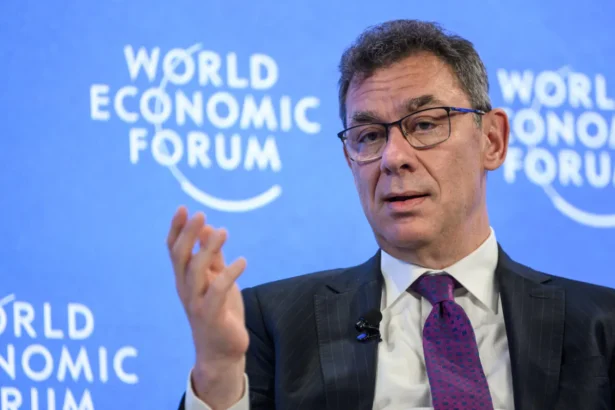Pharmaceutical giant Pfizer slashed its profit and revenue estimates for a full year as it said that demand for COVID-19 vaccines and other products has dropped.
The firm now expects 2023 sales of $58 billion to $61 billion, down from previous forecasts of $67 billion to $70 billion, according to its guidance report that was released on Friday, Oct. 13. The revenue outlook was slashed, it said, “solely due to its COVID products” such as its vaccine and antiviral drug.
It anticipates that sales of its COVID-19 vaccine will be about $2 billion lower than its previously expected forecast due to lower-than-expected rates of people taking the mRNA shot. The firm’s latest COVID-19 booster was made available by U.S. federal regulators last month, but the rollout has been relatively slow—with only about 2 percent of Americans taking any of the vaccines, according to Centers for Disease Control and Prevention’s (CDC) data.
The company also reduced its guidance or Paxlovid, an antiviral drug that targets COVID-19, by about $7 billion, it said.
With the revised guidance, Pfizer’s stock closed down about 2 percent to $32.11 on Friday, another decline in the pharmaceutical company’s shares. Meanwhile, shares of the New York-based company were down about 7 percent in extended trading. At the start of 2023, the company’s stock was trading at around $50.
Pfizer earned record revenue in 2021 and 2022, topping $100 billion last year, after developing its vaccine Comirnaty with German partner BioNTech SE and antiviral treatment Paxlovid on its own. Last year, revenue from those two products exceeded $56 billion.
“We remain proud that our scientific breakthroughs played a significant role in getting the global health crisis under control,” Pfizer CEO Albert Boura said in a statement Friday. “As we gain additional clarity around vaccination and treatment rates for COVID, we will be better able to estimate the appropriate level of supply to meet demand.”
Pfizer said it would take a non-cash charge of $5.5 billion in the third quarter to write off $4.6 billion of Paxlovid and $900 million of inventory write-offs and other charges for the vaccine.
It will also embark on a cost-cutting program, which will target savings of at least $3.5 billion annually by the end of 2024 and will include layoffs, the company said, without providing details on how many jobs will be cut or from what areas. One-time costs to achieve the savings are expected to be around $3 billion.

Pfizer said that under a deal with the U.S. government, a credit for the returned Paxlovid doses will underwrite a program to supply the drug free-of-charge to uninsured and underinsured Americans through 2028 and to patients insured under the government’s Medicare and Medicaid programs through the end of next year.
Pfizer will also provide the U.S. government with one million courses of Paxlovid for the Strategic National Stockpile. The company expects the drug will become commercially available to people with private insurance in Jan. 1.
Other Data
But the company’s guidance last week provides new insight into COVID-19 vaccination rates, which the CDC stopped reporting in May 2023.
In a recent statement, the CDC said that some 7 million Americans have received booster shots made by Pfizer, Moderna, and Novavax. The agency did not break down the figures by how many received each vaccine in its recent statement, issued Oct. 12. However, the 7 million figure represents about 2 percent of all Americans.
“COVID-19 vaccine distribution, which has shifted to the private market, is a lot different than it was last year when the government was distributing them,” said a spokesperson for the Department of Health and Human Services (HHS) about the newest vaccination data. The spokesperson added that the agency is “directly with manufacturers and distributors to ensure that the vaccines are getting to” various locations.
Prior CDC and HHS data has shown that about 17 percent of the U.S. population got previously updated vaccines, representing around 56.5 million people.
For the ending Sept. 30, the hospitalization rate is down by 6 percent, while emergency department visits are down by 14.5 percent, and COVID-19 cases are down 1.2 percent, the figures show. Deaths are up 3.8 percent, although health officials have previously said that deaths generally lag behind hospitalizations and case numbers.
In July, COVID-19 hospitalizations had been increasing for several consecutive weeks. CDC historical data suggest that deaths have been relatively low compared with previous years.
Reuters contributed to this report.
From The Epoch Times

